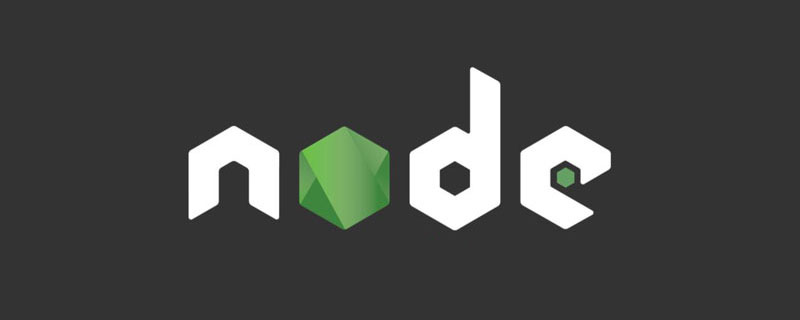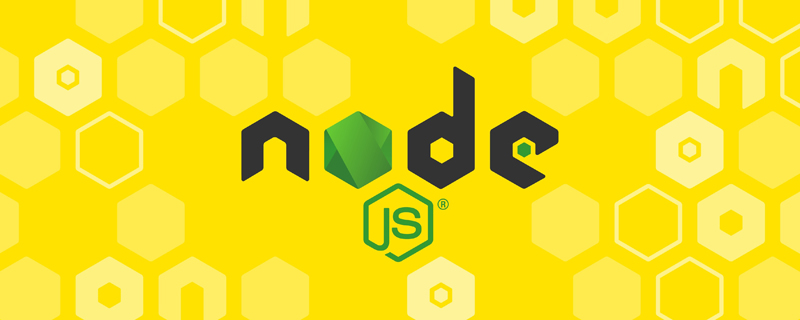nodejs is a JavaScript running environment based on the Chrome V8 engine. It is a development platform that allows JS to run on the server. Vue is a progressive JavaScript framework for building user interfaces. Its goal is to achieve responsive data binding and composed view components through the simplest possible API.

The operating environment of this tutorial: windows7 system, nodejs14.15.4&&vue2.9.6 version, DELL G3 computer.
What is nodejs
Node.js is a JavaScript running environment based on the Chrome V8 engine. Node.js uses an event-driven, non-blocking I/O model.
Node is a development platform that allows JavaScript to run on the server side. It makes JavaScript a scripting language on par with server-side languages such as PHP, Python, Perl, and Ruby. Released in May 2009 and developed by Ryan Dahl, it essentially encapsulates the Chrome V8 engine.
Node optimizes some special use cases and provides alternative APIs to make V8 run better in non-browser environments. The V8 engine executes Javascript very quickly and has very good performance.
Node is a platform built on the Chrome JavaScript runtime, used to easily build web applications with fast response speed and easy expansion. Node uses an event-driven, non-blocking I/O model to be lightweight and efficient, making it ideal for running data-intensive real-time applications on distributed devices.
Advantages of node.js
1. Nodejs syntax is completely js syntax. As long as you understand the basics of js, you can learn Nodejs back-end development
Node breaks the past situation where JavaScript can only run in the browser. The unified front-end and back-end programming environments can greatly reduce development costs.
2. The super high concurrency capability of NodeJs
The primary goal of NodeJs is to provide a simple way to create high-performance servers and various applications that can run in the servers. development tools.
First let us take a look at what problems exist in current server-side languages. In server languages such as Java, PHP or .NET, a new thread is created for each client connection. Each thread requires approximately 2MB of memory. In other words, theoretically, the maximum number of users that can be connected to a server with 8GB of memory at the same time is about 4,000. In order for a web application to support more users, the number of servers needs to be increased, and of course the hardware cost of the web application increases.
NodeJs does not create a new thread for each client connection, but only uses one thread. When a user connects, an internal event is triggered. Through non-blocking I/O and event-driven mechanisms, the Node.js program is macroscopically parallel. Using Node.js, a server with 8GB of memory can handle the connections of more than 40,000 users at the same time.
3. Implementing high-performance servers
Strictly speaking, Node.js is a development tool used to develop various web servers. In the Node.js server, the high-performance V8 JavaScript scripting language is running, which is a scripting language that can run on the server side.
What can Node.js do

##What is vuejs
Vue (pronounced /vjuː/, similar to view) is a progressive JavaScript framework for building user interfaces. Unlike other large frameworks, Vue is designed to be applied layer by layer from the bottom up. Vue's core library only focuses on the view layer, making it easy to integrate with third-party libraries or existing projects. Vue.js is a progressive framework for building user interfaces. Unlike other heavyweight frameworks, Vue adopts a bottom-up incremental development design. Vue's core library only focuses on the view layer, and is very easy to learn and integrate with other libraries or existing projects. On the other hand, Vue is fully capable of driving complex single-page applications developed using single-file components and libraries supported by the Vue ecosystem. The goal of Vue.js is to enable responsive data binding and composed view components through the simplest possible API. Vue.js itself is not a comprehensive framework - it only focuses on the view layer. Therefore it is very easy to learn and very easy to integrate with other libraries or existing projects. On the other hand, Vue.js is also perfectly capable of powering complex single-page applications when used with related tools and supporting libraries.What are the advantages of Vue.js
What are the advantages of Vue compared to other frameworks? We have mentioned jQuery above, and there are other front-end frameworks such as React, Angular, etc. In comparison, Vue is the most lightweight and has formed a complete ecosystem that can be quickly iteratively updated. As the preferred entry-level framework for front-end developers, Vue has many advantages:- Vue.js can be developed in components, which greatly reduces the amount of code writing and makes readers more Easy to understand.
- The most prominent advantage of Vue.js is that it can perform two-way binding of data (we will obviously feel the convenience of this feature in subsequent writing).
The interface effect written using Vue.js itself is responsive, which enables the web page to display very beautiful effects on various devices.
Compared with traditional pages that use hyperlinks to switch and jump pages, Vue uses routing without refreshing the page.
Related recommendations: "vue.js tutorial", "nodejs tutorial"
The above is the detailed content of What are nodejs and vuejs. For more information, please follow other related articles on the PHP Chinese website!
 Vercel是什么?怎么部署Node服务?May 07, 2022 pm 09:34 PM
Vercel是什么?怎么部署Node服务?May 07, 2022 pm 09:34 PMVercel是什么?本篇文章带大家了解一下Vercel,并介绍一下在Vercel中部署 Node 服务的方法,希望对大家有所帮助!
 node.js gm是什么Jul 12, 2022 pm 06:28 PM
node.js gm是什么Jul 12, 2022 pm 06:28 PMgm是基于node.js的图片处理插件,它封装了图片处理工具GraphicsMagick(GM)和ImageMagick(IM),可使用spawn的方式调用。gm插件不是node默认安装的,需执行“npm install gm -S”进行安装才可使用。
 火了!新的JavaScript运行时:Bun,性能完爆NodeJul 15, 2022 pm 02:03 PM
火了!新的JavaScript运行时:Bun,性能完爆NodeJul 15, 2022 pm 02:03 PM今天跟大家介绍一个最新开源的 javaScript 运行时:Bun.js。比 Node.js 快三倍,新 JavaScript 运行时 Bun 火了!
 聊聊Node.js中的多进程和多线程Jul 25, 2022 pm 07:45 PM
聊聊Node.js中的多进程和多线程Jul 25, 2022 pm 07:45 PM大家都知道 Node.js 是单线程的,却不知它也提供了多进(线)程模块来加速处理一些特殊任务,本文便带领大家了解下 Node.js 的多进(线)程,希望对大家有所帮助!
 nodejs中lts是什么意思Jun 29, 2022 pm 03:30 PM
nodejs中lts是什么意思Jun 29, 2022 pm 03:30 PM在nodejs中,lts是长期支持的意思,是“Long Time Support”的缩写;Node有奇数版本和偶数版本两条发布流程线,当一个奇数版本发布后,最近的一个偶数版本会立即进入LTS维护计划,一直持续18个月,在之后会有12个月的延长维护期,lts期间可以支持“bug fix”变更。
 node爬取数据实例:聊聊怎么抓取小说章节May 02, 2022 am 10:00 AM
node爬取数据实例:聊聊怎么抓取小说章节May 02, 2022 am 10:00 AMnode怎么爬取数据?下面本篇文章给大家分享一个node爬虫实例,聊聊利用node抓取小说章节的方法,希望对大家有所帮助!


Hot AI Tools

Undresser.AI Undress
AI-powered app for creating realistic nude photos

AI Clothes Remover
Online AI tool for removing clothes from photos.

Undress AI Tool
Undress images for free

Clothoff.io
AI clothes remover

AI Hentai Generator
Generate AI Hentai for free.

Hot Article

Hot Tools

Zend Studio 13.0.1
Powerful PHP integrated development environment

mPDF
mPDF is a PHP library that can generate PDF files from UTF-8 encoded HTML. The original author, Ian Back, wrote mPDF to output PDF files "on the fly" from his website and handle different languages. It is slower than original scripts like HTML2FPDF and produces larger files when using Unicode fonts, but supports CSS styles etc. and has a lot of enhancements. Supports almost all languages, including RTL (Arabic and Hebrew) and CJK (Chinese, Japanese and Korean). Supports nested block-level elements (such as P, DIV),

Notepad++7.3.1
Easy-to-use and free code editor

ZendStudio 13.5.1 Mac
Powerful PHP integrated development environment

VSCode Windows 64-bit Download
A free and powerful IDE editor launched by Microsoft








